CRM software stands for Customer Relationship Management software and is a category of software that helps businesses manage customer data and interactions. A CRM system can automate marketing tasks and campaigns, as well as help sales staff track of their interactions with customers and potential customers.
The CRM tools market is growing rapidly, with new CRM tools and platforms being released all the time. Many businesses are making the switch to cloud-based types of CRM to take advantage of the scalability and flexibility that this type of CRM offers.
How does a CRM work?
A CRM system helps businesses track of their customer interactions, both online and offline. The CRM system can be used to track customer data, such as contact information, customer history, and purchase history.
The CRM system can also be used to track: phone calls, emails, and live chat sessions. The CRM system can also be used to track the results of marketing campaigns.
The Benefits of Using a CRM
A CRM can benefit businesses by providing them with a bird’s eye view as well as granular data related to all the business development aspects, including increased sales, more accurate sales forecasting, and higher productivity and efficiency.
Improved Customer Retention

CRM can be an invaluable tool for improving retention. By tracking customer interactions and purchase history, a CRM can give businesses insights into customer and prospect behavior, allowing them to better understand what customers need and what they do not.
This allows businesses to customize their marketing campaigns and communications, creating a more personalized customer experience.
In addition to providing a better understanding of customer needs, a CRM can help businesses maintain communication with their customers by automating follow-up messages after purchases or other interactions.
This helps create stronger customer relationships as they feel appreciated and cared for. Sending out automated emails or messages containing promotional offers or discounts also encourages return visits from existing customers, helping businesses increase their revenue by encouraging repeat purchases.
A CRM can also help businesses identify potential issues before they arise, allowing them to address any problems before they become bigger issues that could lead to customer dissatisfaction. For example, if a customer has not received a product yet, even though it was shipped out already, the CRM system would notify the business so that they can take action promptly to prevent negative reviews or dissatisfied customers.
In addition, the CRM can detect certain behaviors that may indicate that a customer is about to leave so that proactive steps can be taken to try and retain them.
Improved Customer Segmentation

A CRM platform can be an important tool for helping businesses achieve improved customer segmentation. By collecting and analyzing customer data, including contact information, purchase history, and customer interactions based on which the customers and prospects can be divided into segments based on multiple demographics or characteristics or both.
Segmenting customers is important because it allows businesses to create targeted marketing campaigns that are more tailored to the needs of each segment. For example, if a business has identified certain customers who are more likely to respond to discounts or promotions, it can create campaigns specifically targeting those customers to increase sales.
Similarly, if a business knows that certain segments respond better to email versus physical mailers or ads on social media, they can customize their campaigns accordingly to maximize their effectiveness. Having detailed insights about customer segments also helps businesses make better decisions when introducing new products or services.
By understanding the needs and interests of different types of customers, businesses can modify their offerings to better meet the needs of those groups and increase sales as a result. In addition, segmentation also allows businesses to identify high-value customers who have the potential to generate more revenue in the future.
Overall, a CRM help businesses achieve improved customer segmentation by providing detailed insights into consumer behavior which allow them to tailor their offerings and marketing strategies according to different customer segments.
Increased Sales

Implementing a CRM provides a wealth of insights into customer behavior and preferences. By collecting and analyzing data on customer contacts, purchases and interactions, the software can give businesses an in-depth understanding of who their customers are and what they’re looking for. This allows them to target their marketing campaigns more effectively, ensuring that the right message is sent to the right people at the right time.
A CRM also enables businesses to automate certain tasks, such as follow-ups or reminders. Automating follow-up emails after a purchase or setting up automated reminders before important deadlines help ensure that customers stay engaged with the company and are reminded of products or services they may have forgotten about. Furthermore, these automated messages increase customer satisfaction since it shows that the business cares enough about them to go out of its way to make sure they’re happy with their purchase.
A CRM system can also help businesses improve retention rates by creating personalized experiences for each individual customer. By tracking past purchases and interactions with each customer, businesses can tailor offers or discounts specifically for them, encouraging repeat purchases.
Detailed Analytics

Adding data from multiple sources makes your CRM a powerful business tool that can help visualize a micro and macro view of your customers, sales health, and forecasts. Through comprehensive tracking of customer contacts, purchases, and interactions, companies can gain an in-depth understanding of their customers, what they’re looking for, and how to best target them.
This enables businesses to segment customers based on shared characteristics such as purchase history or preferences, allowing them to create targeted campaigns that are tailored specifically to each group’s needs and interests.
A CRM also provides valuable insights into consumer behavior which allows businesses to more accurately predict customer churn rates and optimize their retention strategies accordingly.
CRM systems also give businesses access to detailed analytics such as customer lifetime value (CLV) calculations or propensity modeling, enabling them to identify high-value customers and tailor their strategies accordingly. By identifying these high-value customers early on, businesses can focus on retaining them for longer periods of time – resulting in greater long-term profits.
More Accurate Sales Forecasting

CRM tools are an invaluable tool for businesses looking to acquire more accurate sales forecasting. By tracking customer behavior, purchases and interactions, companies can gain a deeper understanding of who their audience and what they’re looking for – allowing them to create targeted campaigns and offers tailored to specific customer segments.
This helps ensure that the right message is sent to the right people at the right time – resulting in increased sales opportunities. Additionally, they also provide valuable insights into consumer behavior which allows businesses to accurately predict customer churn rates and optimize their retention strategies accordingly.
CRM tools provide detailed analytics such as customer lifetime value (CLV) calculations or propensity modeling, enabling them to identify high-value customers and tailor their strategies accordingly. By identifying these high-value customers early on using a CRM, businesses can focus on retaining them for longer periods of time – resulting in greater long-term profits.
This information can then be used by companies to forecast future sales, allowing them to adjust their marketing efforts accordingly and maximize their ROI.
This helps increase retention rates while providing detailed analytics into consumer behavior, which enables companies to tailor their offerings and marketing strategies according to different customer segments. Ultimately leading to increased sales and revenues – further increasing the accuracy of sales forecasting. One of the key Benefits of CRM integration!
Finally, automating certain tasks such as follow-ups or reminders allows businesses to reduce the manual labor associated with traditional marketing methods. This doesn’t only improve customer service but also saves money in labor costs, freeing up resources that can be devoted towards improving sales forecasting even further. Therefore, it is clear that they play an essential role in acquiring accurate sales forecasts.
Automated Sales Reports

CRM systems are invaluable tools for businesses seeking an accurate understanding of their customer base and insights into sales patterns. By tracking customer behavior, purchases and interactions, companies can create automated sales reports that provide detailed analytics, such as customer lifetime value (CLV) calculations or propensity modeling, enabling them to identify high-value customers and tailor their strategies accordingly. This helps ensure that the right message is sent to the right people at the right time which results in increased sales opportunities.
Moreover, automated messages sent out through them help improve satisfaction since it shows that the business cares enough about its customers to go out of its way to make sure they’re happy with their purchase, which leads to higher levels of loyalty over time.
This helps increase retention rates while providing detailed analytics into consumer behavior. This enables companies to tailor their offerings and marketing strategies according to different customer segments.
Ultimately leading to increased sales and revenues – further increasing the accuracy of sales forecasting.
Automated sales reports generated by a CRM system can provide businesses with real-time data on customer trends and preferences. This enables them to anticipate changes in demand or identify emerging markets before they become mainstream.
Additionally, these reports can give businesses insights into customer segmentation based on buying behavior, allowing them to craft tailored campaigns or optimize pricing strategies for maximum profitability.
Ultimately, this CRM function ends up freeing up resources that can be devoted to improving sales forecasting even further.
Finally, automated sales reports also allow companies to easily track performance metrics such as conversion rates or ROI over time, helping them optimize their campaigns for better results in the future.
By combining data from multiple sources, such as web traffic history, email content performance statistics, or social media engagement metrics, automated reporting provides a holistic view of how well each channel performs.
A CRM system also provide strategists with actionable insights into how campaigns can be improved for better success next time round.
Centralized Database of Information

A CRM system can provide businesses with an invaluable centralized database of information that can help optimize business operations and streamline processes. This centralized repository helps businesses to store, access, and analyze sales, marketing or audience data quickly and efficiently, allowing them to gain insights into customer behaviors and preferences.
Furthermore, the data can be used to identify trends in customer behavior, enabling businesses to anticipate customer needs more accurately while adjusting their strategies accordingly.
By having a centralized database of information at their disposal, businesses can create detailed customer profiles that provide a better understanding of their target market. Through segmentation or predictive analysis, companies can gain insights into customer purchases, interaction history, or spending habits. All of these can be used to tailor campaigns or develop specific product offerings according to customer needs.
By storing customer data in one place, companies benefit from improved security as they can easily monitor activity across multiple channels without needing multiple software solutions.
Moreover, a centralized database allows businesses to quickly retrieve information when needed, such as customer contact details or sales reports for managers – making it easier for teams to collaborate and make informed decisions faster.
This type of system helps automate manual tasks such as follow-ups or reminders, saving time on mundane tasks while freeing up resources that can be devoted to other areas such as sales forecasting.
By providing managers with instant access to real-time performance data such as ROI or conversion rates, these software systems enable them to make better decisions while helping them identify areas where improvements are necessary. Which increases profitability in the long run.
A CRM system automates mundane tasks such as follow-ups or reminders, which saves time on labor costs. CRMs also provide managers with instant access to performance metrics that help identify areas needing improvement, and this improves success rates over time.
Higher Productivity and Efficiency

By providing users with a centralized database of information, CRM systems enable businesses to store, access and analyze data quickly and efficiently.
This helps businesses better understand their target market while making strategic decisions that will increase profitability in the long run.
In addition, by automating mundane tasks such as follow-ups or reminders, CRM systems save time on labor costs while freeing up resources that can then be devoted to other areas such as sales forecasting.
Furthermore, through segmentation or predictive analysis, companies benefit from improved security as they can easily monitor activity across multiple channels without needing multiple software solutions.
By having access to real-time performance data such as ROI or conversion rates, managers can make better decisions faster – leading to increased success over time.
Managed Communications with Prospective Leads

CRM systems are invaluable for businesses, providing them with the tools needed to better manage communications with prospective leads. By providing users with a centralized database of information and automated marketing tasks, businesses can quickly access customer data while gaining valuable insights into consumer behavior that help increase profitability in the long run.
Furthermore, these systems simplify communication between departments by automating mundane tasks such as follow-ups or reminders, which saves time on labor costs while providing managers with real-time performance metrics – allowing them to make better decisions faster.
Additionally, through segmentation or predictive analysis, companies benefit from improved security as they can easily monitor activity across multiple channels without needing multiple software solutions.
Their detailed reporting capabilities allow managers to identify high-value customers and understand how well each channel performs. Which enables them to create tailored campaigns that will boost sales in the long run. This helps businesses better understand their target market while making strategic decisions that will increase profitability in the long run.
Streamlined Internal Communications

CRM systems have the potential to revolutionize the way businesses communicate internally. They can streamline processes and offer detailed reporting capabilities that make it easier for staff to collaborate and work more efficiently.
By providing users with a centralized database of information and automated tasks, businesses can quickly access customer data while gaining valuable insights into consumer behavior that help increase profitability in the long run.
Furthermore, these systems simplify communication between departments by automating mundane tasks such as follow-ups or reminders, which saves time on labor costs while providing managers with real-time performance metrics – allowing them to make better decisions faster.
Additionally, through segmentation or predictive analysis, companies benefit from improved security as they can easily monitor activity across multiple channels without needing multiple software solutions.
They also enable staff to create tailored campaigns based on individual customers’ interests and needs – helping them build relationships with prospective leads over time. This helps businesses better understand their target market while making strategic decisions that will increase profitability in the long run.
CRMs provide an invaluable centralized database of information that can be used to streamline processes – eliminating paperwork and manual filing while helping teams become more productive and efficient.
Finally, these systems offer detailed reporting capabilities that allow managers to identify high-value customers and understand how well each channel performs. This helps them create tailored campaigns that will boost sales in the long run.
This helps businesses gain a greater understanding of their internal communications, allowing them to optimize their strategies for maximum success over time.
Who Needs to Use CRM Software?

The main goal of customer relationship management is to improve satisfaction and loyalty. By improving communication and providing better service, companies can increase retention and grow their business.
CRMs can be used to track every interaction a company has with a customer. This data can be used to improve service, target marketing campaigns, and understand what products or services customers are interested in.
They can also help companies automate their processes. For example, if a customer calls to inquire about a product, the CRM system can automatically send them information about the product. This can save time and resources for the company.
Overall, customer relationship management is a valuable tool for any company that wants to improve its communication with customers and grow its business.
How Can Different Industries Benefit from CRMs?
E-Commerce
In its most basic form, CRMs can be used to manage customer relationships and track customer interactions in the eCommerce industry. This can help businesses to improve satisfaction levels and increase sales.
Retail
Retail businesses can use CRMs to track customer purchase history and preferences, which can then be used to provide targeted promotions and personalized service.
Healthcare
Keeping track of patient records, appointments, and prescriptions. This improves patient care and increases efficiency within the healthcare system.
Pharmaceutical
CRMs can be used by pharmaceutical companies to track interactions and sales. This information can be used to improve marketing strategies and increase revenue.
Service
Service businesses can use CRMs to track interactions and service requests. Which improves customer service levels over time, and increases the chances of repeat business.
Call Center
CRMs can be used in call centers to keep track of interactions and phone calls. This information can be used to improve customer service levels and increase revenue.
Education
CRMs can be used in the education industry to keep track of student records, grades, and test scores. The information can improve student performance and increase your establishment’s retention rates.
Real Estate
In the real estate industry CRMS can help keep track of property listings, client contact information, and sale histories. The gathered information can be utilized to improve marketing strategies and increase revenue.
Banking
Banks can utilize CRMs to keep track of customer accounts, transactions, and loan histories. This information can be used to improve customer service levels and reduce fraudulent activity.
Hotel
The hospitality industry, too, can utilize CRM software to keep track of guest reservations, check-ins/checkouts, and special requests. The information is then leveraged to improve guest satisfaction levels and increase repeat business.
Travel
CRM software can be used in the travel industry to track customer itineraries, plans, and preferences. This data can then be used to provide personalized service and increase revenue.
Types of CRM
There are different types of CRM systems available to businesses, each offering different advantages and disadvantages.
Analytical Systems
This CRM system analyzes data to better understand their needs and wants. This information can then be used to improve service and target marketing efforts. However, these systems can be expensive and time-consuming to set up and maintain.
Collaborative Systems
These aim to improve communication and collaboration between businesses and their customers. These systems typically provide customers with a self-service portal where they can access information and make changes to their accounts, as well as submit requests or problems. This can help reduce the need for customer support staff, but it can also make it more difficult to track customer interactions.
Strategic Systems
This type of CRM system is designed to help businesses align their activities with their overall business strategy. These systems can be complex and expensive, but they offer the benefit of providing a comprehensive view of the customer lifecycle.
5 Essential CRM features for small businesses
Contact Management
This CRM feature allows businesses to keep track of their customers and potential customers, as well as their contact information. This can be extremely helpful in sales and marketing efforts, as well as customer service.
Automation
Another key feature of CRMs. This can help businesses streamline their sales processes, making them more efficient and effective. Automation can also help to reduce human error, which can lead to losing business.
Lead Management
This can help businesses track and manage their leads, as well as their sales pipeline. Lead management can also help businesses identify hot leads and prioritize them accordingly.
Business Intelligence and Reporting
This allows businesses to track their performance and understand what is working and what is not. Business intelligence and reporting can also help businesses make better decisions about their sales and marketing strategies.
Client Interaction Chatting
This feature offers an excellent way for businesses to interact with their clients and customers. This can help build relationships and trust, as well as provide valuable feedback. Client interaction chatting can also help resolve issues and problems quickly.
How to choose the right CRM for your small business?
Picking the right CRM for your small business can be daunting – there are many options out there, and it’s hard to know which one is right for you. The good news is that there are some key things to look for in a CRM that will help you narrow down your options and choose the right one for your business.
Here are four things to remember when choosing a CRM for your small business:
Goals of CRM systems

When choosing a CRM, you must consider what goals you want it to help you achieve. As it can do so much for your business, what are you after?
Do You Want to Improve the Buyer’s Journey?
This helps businesses better understand their target markets and tailor their products and services to meet their customers’ needs.
One of the most important aspects of CRMs is lead management. Through lead management, businesses can track potential customers throughout the buying process, helping them identify hot leads and prioritize them accordingly.
This allows businesses to capture more sales opportunities by targeting these highly qualified leads with personalized offers and content.
They also allow businesses to automate many of their sales processes, making it easier to manage leads as they move through the buyer’s journey. Automation also helps reduce human error, which can result in lost sales opportunities or poor customer experiences.
Automated processes such as mailers, emails, or text messages can be sent out at specific points in the buyer’s journey to help guide them through each stage of the process.
Another helpful feature of CRMs is client interaction chatbots, which provide an easy way for small businesses to interact with their customers and build relationships with them over time. Chatbots allow customers to ask questions or request assistance without waiting on hold for a customer service representative.
They also offer an excellent opportunity for businesses to collect feedback from customers about their products or services, giving them valuable insight into how they are performing in the marketplace.
Overall, CRM systems are incredibly useful tools for any small business trying to improve the buyer’s journey. By leveraging powerful features such as lead management, automation tools, client interaction chatbots, and business intelligence reporting capabilities, businesses can gain invaluable insight into customer behavior. This will help them increase conversions and maximize ROI from every sale opportunity available to them.
Do you want to Increase Operational Efficiency?

Customer relationship management (CRM) systems are incredibly powerful tools for small businesses, allowing them to gain valuable insights into customer behavior and improve the buyer’s journey. But they can also be used to increase operational efficiency by streamlining processes, automating tasks, and providing clear visibility into business performance.
One of the primary ways CRM systems can help increase operational efficiency is by automating routine tasks. By setting up automated processes, businesses can reduce time-consuming manual tasks such as data entry or customer follow-up emails.
This automation allows businesses to free up resources that would have been spent manually completing these mundane tasks and dedicate them elsewhere in their operations.
Another way CRM systems can help businesses increase operational efficiency is by providing more visibility into performance metrics. Through robust reporting capabilities, businesses can track key performance indicators (KPIs) over time to determine how their strategies are performing in the marketplace.
This allows them to make better-informed decisions about which channels or campaigns are most effective at driving conversions and sales and adjust accordingly if needed.
CRM systems also provide greater insight into customer behavior that can be used to inform marketing efforts and maximize ROI from every sale opportunity available to them. By leveraging powerful features such as lead management, automation tools, client interaction chatbots, and business intelligence reporting capabilities, small businesses can gain invaluable insight into customer needs and preferences that can inform their sales and marketing efforts.
This helps businesses better understand their target markets to tailor their products and services to meet their customers’ needs more effectively.
Finally, CRM systems enable companies to build strong customer relationships through personalized communication, such as automated emails or text messages sent out at specific points in the buyer’s journey. Client interaction chatbots also allow customers to ask questions or request assistance without having to wait on hold for a customer service representative.
These personalized interactions help strengthen loyalty among existing customers while also helping companies capture new leads with highly qualified prospects who may not have been aware of the business otherwise.
Overall, CRM systems offer many powerful features that small businesses can use to improve operational efficiency while also delivering personalized experiences for their customers that drive conversions and sales opportunities over time.
By leveraging these features, small business owners can maximize ROI from every sale opportunity available while also increasing operational efficiency within their organization – a win-win scenario for any small business trying to get ahead in today’s competitive marketplace!
Do You Want to Boost Customer Retention?

CRM systems can be incredibly powerful tools for boosting customer retention. Through automated processes, businesses can easily and quickly follow up with existing customers and nurture relationships by reaching out via email, text messages, or social media to stay on your customers’ minds.
By doing so, focusing on your customers’ social media in particular, businesses can ensure that their customers are regularly updated on the company’s products and services and never forget about them.
Another way CRM systems can help boost retention is through personalized communication. Businesses can use the data collected from CRM systems to create customized campaigns designed to re-engage customers who may have lost interest or stopped making purchases.
By sending out personalized emails or social media messages tailored to their individual needs, businesses can make sure their customers feel appreciated and seen, which helps create a stronger bond between them and the company – a key factor in customer loyalty.
Businesses can also use CRM systems to track customer behavior over time, through their social media presence, to identify any patterns or trends in purchasing habits. This allows businesses to anticipate needs before they even arise and provide solutions that meet those needs as soon as possible – an invaluable asset for any business wanting to increase retention rates.
For example, suppose a customer frequently purchases one product over another every month. In that case, the business could offer discounts for bulk orders of that particular product – a great way of showing appreciation for their loyalty while also boosting sales opportunities at the same time.
Finally, businesses can leverage CRM systems’ powerful analytics capabilities to measure how successful their retention efforts perform against other marketing channels or campaigns over time. Through robust reporting features such as dashboards and KPIs, companies can assess whether they are achieving their desired goals, allowing them to make adjustments if necessary. Are they posting enough on social media to capitalize on their presence, for example.
Whatever your goals may be, whether your campaign is email-based or social media-focused, make sure that the CRM you choose is designed to help you achieve them.
Ease of Use
No matter how powerful a CRM is, it won’t do your business any good if it’s not easy to use. When evaluating potential solutions, look for one that
- Is intuitive and user-friendly, so you don’t need extensive training to get started;
- Offers features such as drag-and-drop functionality or customizable templates to make creating documents quick and easy;
- Has a well-designed interface that makes navigating through the system straightforward;
- Can integrate with third-party tools like accounting software, customer service systems, or sales and marketing automation systems. This allows you to get more out of your existing technology investments while also streamlining processes across all these platforms.
Ease of Integration with Other Systems
To get the most out of your CRM, it’s essential to make sure that the solution you choose can easily integrate with other systems and applications. This way, you can streamline processes across all your software platforms, eliminating errors and saving time in the long run.
When evaluating potential solutions, make sure they offer APIs (Application Programming Interfaces) that allow them to “talk” with other programs, as well as built-in connectors for popular services like Salesforce or Mailchimp.
Cost and Scalability

Don’t be tempted to select the cheapest option available – make sure to evaluate the cost-benefit ratio of each solution before making a decision. Consider how much you are willing to pay for the software in total, as well as whether there are any ongoing fees or hidden costs associated with it.
Additionally, think about scalability when selecting a CRM system. As your business grows over time, you may need to upgrade your existing system or switch providers altogether – so look for one that offers an easy transition process and allows you to scale up seamlessly without compromising on features or performance.
Overall, CRM software can be a critical tool for businesses looking to get ahead in the digital age. By leveraging data-driven insights, automated processes, and intuitive functionality, businesses can gain a competitive edge and ensure success for years to come.
Frequently Asked Questions
What is a CRM, and how does it work?
A customer relationship management (CRM) system is software that businesses use to manage their relationships and interactions with customers. It helps companies store, analyze and access data to provide better service, build loyalty, and increase sales opportunities.
What is an example of Customer Relationship Management?
Salesforce is one of the most popular CRM systems available today. It offers features such as data storage, lead and contact management, sales forecasting tools, marketing automation capabilities, and analytics reporting.
Why is client relationship management critical?
CRM is important because it helps businesses build and maintain strong customer relationships. By leveraging data-driven insights and automated processes, companies can gain a competitive edge, increase customer loyalty and satisfaction, and ensure success in the digital age.
What are the four types of customer relationship management?
The four main types of customer relationship management are operational CRM, analytical CRM, collaborative CRM, and strategic CRM. Operational CRM focuses on day-to-day activities like customer service and sales support; analytical CRM helps analyze data to gain insights; collaborative CRM enables companies to work together with customers more effectively; and strategic CRM is used to identify new opportunities and create long-term strategies.
What is CRM vs ERP?
Customer relationship management (CRM) is software used to manage customer relationships, while enterprise resource planning (ERP) software helps a company manage its internal processes. ERP systems are typically used for managing accounting and financial data, while CRM systems are focused on sales, marketing, and customer service.
What is the role of Customer Relationship Management?
The role of customer relationship management is to help businesses develop, manage and analyze customer relationships. By leveraging data-driven insights, automated processes, and intuitive functionality, companies can gain a competitive edge and ensure success for years to come.
What are the 4 components of CRM?
The four components of CRM are customer segmentation, customer data management, interactions, and customer insights. Customer segmentation involves grouping customers into categories based on their needs, interests or behaviors; customer data management stores useful information about customers; interactions cover all communication between the company and its customers; and customer insights help companies gain valuable insight from analyzing data.
What are some good examples of CRM software?
Good CRM software will depend on your individual business needs. Popular options include Salesforce, Oracle CX Cloud Suite, Dynamics 365, Zoho CRM, HubSpot CRM, and MailChimp, among many others. Taking the time to evaluate each option can help you select the right one for your business.
What are the 4 stages of customer relationship management?
The four stages of customer relationship management are acquisition, retention, loyalty and advocacy. Acquisition is the process of gaining new customers; retention is maintaining relationships with existing customers; loyalty involves encouraging repeat purchases from existing customers; and advocacy is when satisfied customers become promoters who spread the word about your business.
What are the 4 Ps of CRM?
The four Ps of CRM are: prospecting, personalization, process automation, and purchase power. Prospecting involves identifying potential customers; personalization is customizing experiences for individual customers; process automation streamlines customer-facing activities; and purchase power is the ability to offer discounts or incentives to maintain customer loyalty.
What are the 5 steps in the customer relationship management process?
The five steps in the CRM process are:
1) identify customer needs
2) segment customers
3) create customer engagement strategies
4) measure and analyze performance
5) take action based on findings.
By following these steps, companies can effectively manage their customer relationships to ensure a successful future.
What are the two definitions of CRM?
The two definitions of CRM are customer-centric and technology-centric. Customer-centric CRM focuses on the customer experience, from acquisition to loyalty. Technology-centric CRM refers to software used for managing data and interactions, such as salesforce automation (SFA) and marketing automation (MA).
The five steps in the CRM process are: identify potential customers, develop relationships with customers, analyze customer data, deliver personalized experiences, and measure the success of your efforts. Identifying potential customers involves attracting new leads; developing relationships requires nurturing those leads into paying customers; analyzing provides useful insights about their needs and preferences; delivering personalized experiences involves customizing each interaction based on those insights; and measuring success tracks customer loyalty and ROI.
What is Customer Relationship Management by Kotler?
Philip Kotler defines CRM as “a process for creating, maintaining, and enhancing strong customer relationships at a profit”. According to him, CRM involves four specific activities:
1) understanding customer needs.
2) identifying potential customers and managing existing ones.
3) attracting new customers.
4) retaining loyal customers by providing customized products/services.
To successfully implement a CRM system, companies need to consider the four Ps of CRM: prospecting, personalization, process automation, and purchase power.
By understanding customer needs and attitudes, businesses can optimize processes that create customer value while increasing profitability.
